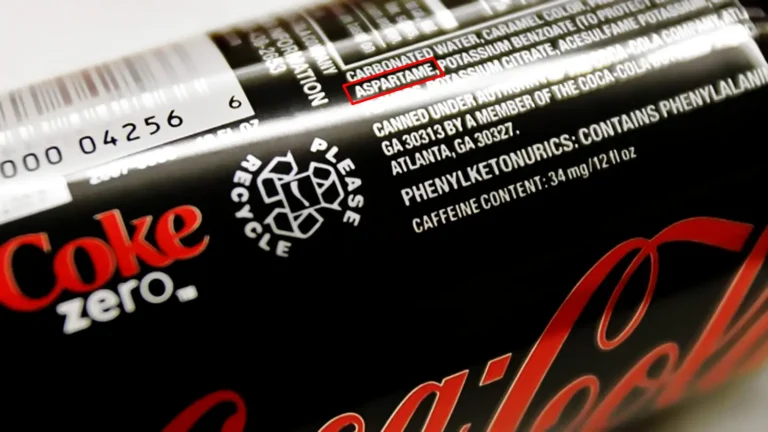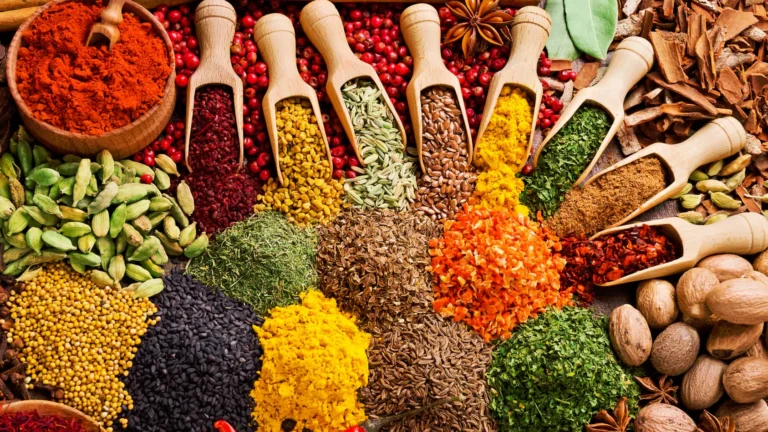Mittelmeerdiät- „Wunder“ von Olivenöl
Die Mittelmeerdiät, die als Olivenölwunder vermarktet wurde, hatte nichts mit Öl jeglicher Art zu tun, außer in dem Maße, dass es Butter und Schmalz ersetzen kann.
Milos Pokimica
Geschrieben von: Milos Pokimica
Medizinisch Begutachtet Von: Dr. Xiùying Wáng, M.D.
Aktualisiert am 9. Juni 2023Gute alte gesunde mediterrane Ernährung. Wird als Olivenölwunder vermarktet, das nichts mit Öl jeglicher Art zu tun hat, außer in dem Maße, dass es sogar schlechtere Alternativen wie normale gesättigte Fette wie Butter und Schmalz ersetzen kann. Genauso sah es sogar der Vater der Mittelmeerdiät (Schlüssel, 1987). Wenn Sie auf pubmed.gov nach einer Mittelmeerdiät suchen, werden etwa 5.000 Ergebnisse angezeigt. Die Mittelmeerdiät umfasst viele Diäten in vielen verschiedenen Ländern. Es kann Marokko oder Griechenland oder Spanien oder Italien oder ein anderer Ort sein.
Wenn wir jedoch über die Mittelmeerdiät sprechen, meinen wir damit die Ernährung auf der Insel Kreta in der Zeit nach dem Zweiten Weltkrieg. Als nächstes stellt sich außerdem die große Frage: Warum waren Herzerkrankungen im Mittelmeerraum selten? Bedeutung auf der Insel Kreta nach dem Zweiten Weltkrieg.
Nach dem Krieg und dem sozioökonomischen Zusammenbruch im Jahr 1948 war die griechische Regierung besorgt über die Unterernährung und den Gesundheitszustand ihrer Bürger. Sie beschloss, die Rockefeller Foundation einzuladen, um eine epidemiologische Studie auf der Insel Kreta durchzuführen. Im Jahr 1952 stellte Ancel Keys, derselbe Wissenschaftler, der für das Minnesota Starvation Experiment verantwortlich war, beeindruckt von den niedrigen Herzkrankheitsraten, nach der Auswertung der Daten einen Zusammenhang zwischen Fett, insbesondere gesättigten Fettsäuren, und Herzkrankheiten fest. Zu diesem Zeitpunkt sah er Cholesterin jedoch nicht als Problem an, da dies bedeutet hätte, dass tierische Produkte dafür verantwortlich wären. Der Zusammenhang zwischen Nahrungsfett und Herzerkrankungen wurde bereits in den 1930er Jahren beobachtet und beeinflusste Keys’ Arbeit, aber die Daten aus Kreta veranlassten ihn 1953, einen Artikel darüber zu schreiben und öffentliche Vorträge zu halten. Die berühmte Sieben-Länder-Studie sollte fünf Jahre später, 1958, beginnen, um Keys’ Bedenken zu untersuchen (www.sevencountriesstudy.com). In den 1960er Jahren war man allgemein davon überzeugt, dass gesättigte Fettsäuren zu Herzerkrankungen beitragen. Die Ernährung der Menschen auf der Insel Kreta war später ein Katalysator für diese Forschung. 1970 wurde erstmals die Sieben-Länder-Studie vorgelegt. Jetzt wurde Keys 100 Jahre alt und war zu dieser Zeit nicht so radikal, wie die Cholesterin-Verwirrungen Sie glauben machen wollen. Er empfahl, weniger Fett zu essen, also Fett im Fleisch und Fett im Allgemeinen wie Eier (oder zumindest Eigelb) und Milchprodukte, und stattdessen mehr Fisch und Hühnchen zu essen. Er betrachtete Obst und Gemüse lediglich als Ergänzungsnahrung und hatte einen Cholesterinspiegel von etwa 200. Diese Zahl ist bei weitem nicht gesund, aber er wurde 100 Jahre alt. Das Problem bestand darin, dass er ein Arzt war und dem gleichen System angehörte wie alle anderen anderer Arzt.
Arteriosklerose ist eine Krankheit, kein Alterungsprozess. Wir können uns die Arterien und den Blutdruck armer Menschen an Orten wie Kreta ansehen. Keys erkannte nicht die wahre Realität der Ernährung auf Kreta. Er dachte, es handele sich nur um Fett und sah kein Problem in tierischem Eiweiß. Tierisches Proteinkorrelation wurde sogar in den Charts übersehen. Er trübte das Wasser, indem er einfach auf Fett zeigte.
Allerdings war selbst das nicht gut genug. Sogar das war übertrieben. Im Jahr 1966 veröffentlichten George Campbell und Thomas L. Cleave „Diabetes, Coronary Thrombosis, and Saccharine Disease“. Sie argumentierten, dass chronische westliche Krankheiten wie Herzerkrankungen, Magengeschwüre, Diabetes und Fettleibigkeit durch eine Sache verursacht werden: „Krankheit durch raffinierte Kohlenhydrate“. Es war eine nie endende Geschichte. Es hat bis heute nie aufgehört. Alles ist eine Lüge, der die entgegengesetzte Lüge gegenübersteht. Künstlich erzeugte Diätkriege und Verwirrung. Es war eine gute Designstrategie, die in 70 Jahren nichts geändert hat, außer dass normale Menschen mit krankheitsverursachendem Geld überzogen wurden und eine böse Schleife des Elends entstand. Selbst in der heutigen Zeit ist es die gleiche alte Manipulationsgeschichte. Im Jahr 2001 schrieb Gary Taubes beispielsweise in dem Artikel im Science Magazine mit dem Titel „Nutrition: The Soft Science of Dietary Fat“:
“Es ist nach wie vor umstritten, ob der Verzehr von gesättigten Fetten über den empfohlenen Mengen bei Personen, die nicht bereits ein hohes Risiko für Herzerkrankungen haben, die Wahrscheinlichkeit eines vorzeitigen Todes erhöht ... oder ob Studien im Wert von Hunderten Millionen Dollar überzeugende Beweise dafür liefern konnten, dass gesunde Menschen ihr Leben um mehr als ein paar Wochen verlängern können, wenn überhaupt, indem sie weniger Fett essen.”
70 Jahre später glauben die Menschen, dass die mediterrane Ernährung aufgrund des Olivenöls gesund ist. Dies ist ein hervorragendes Beispiel für eine Halbwahrheit. Italienische Restaurants vermarkten sich selbst als gesunde mediterrane Küche mit Spaghetti Carbonara und Alkohol. Die Sterblichkeitsrate aufgrund von Herzerkrankungen auf Kreta war zu dieser Zeit mehr als 20 Mal, nicht 20 Prozent, sondern 20 Mal niedriger als in den USA. Wir sehen diese Daten statistisch aus Orten wie dem ländlichen China, Kreta, Okinawa und so weiter und stellen fest, dass die Ernährung dieser Menschen einfach und ähnlich ist. Wie dumm müssen wir sein, um nicht zu erkennen, was wirklich vor sich geht? Wissenschaftler mit einem hohen Bildungsniveau sind nicht die Dummen. Sie haben ein sechsstelliges Jahreseinkommen plus Boni. Sie sind die Klugen. Wir sind es nicht. Ernährungswissenschaft ist keine geheime, tief unterirdische militärische Antriebslaborforschung. Es gibt keine echten Debatten auf dem Gebiet der Ernährung, sondern nur die absichtliche Schaffung von Verwirrung.
Was haben die Menschen auf Kreta nach dem Zweiten Weltkrieg gegessen? Die Antwort ist dieselbe. Kein Fleisch, keine Eier und keine Milchprodukte. Nur die Nahrung der Armen wie Obst und Gemüse, Getreide, Nüsse und Hülsenfrüchte. Dinge, die lokal wachsen. In Zahlen ausgedrückt aßen sie mehr als 90% pflanzliche Produkte, während Fleisch, Fisch, Milchprodukte und Eier zusammen etwa 7% ausmachten. Sie aßen zwar etwas Olivenöl, da Oliven auf Kreta wachsen, aber das ist keine Olivenöl-Diät. Und auch keine Weindiät. An Wein ist nichts Gesundes, außer den Trauben. Wir wären besser dran, wenn wir einfach rohen Traubensaft trinken würden. Wenn wir uns das heutige Griechenland ansehen, was würden wir dort wohl vorfinden? Das Land hat die höchste Rate an Fettleibigkeit bei Kindern in Europa. Die Insel Kreta eingeschlossen. Sobald sich die Wirtschaft verbessert, kommen Fleisch, Käse, Zucker und Alkohol ins Spiel. Und auch das Rauchen. Griechenland hat eine Tabakkonsumrate von über 40%. Die mediterrane Ernährung war keine lokal spezifische mediterrane Ernährung wie die italienische oder griechische Küche oder ähnliches. Es war eine Armutsernährung ohne Fleisch, Eier und Milchprodukte, ähnlich wie die Ernährung in allen von Armut oder Krieg heimgesuchten Gebieten, und die Industrie erwähnt dies nicht gerne. Herzkrankheiten waren in Griechenland eine Seltenheit. Waren. Sind es nicht mehr. Und selbst auf Kreta aßen einige reiche Leute in Kriegszeiten “normal”, d. h. sie aßen jeden Tag Fleisch statt nur einmal alle zwei Wochen. Herzinfarkte waren für sie ebenfalls normal, im Gegensatz zu den übrigen einfachen Leuten, die von Armut betroffen waren. Heute ernährt sich niemand mehr nach der echten mediterranen Ernährung. Die reine mediterrane Ernährung von heute, die überwiegend pflanzlich ist, ist keine echte Vollwertkost. Sie wird von Weißmehl, dem Konsum von Öl und Salz sowie Alkohol dominiert. Auf Kreta aß man keine raffinierten weißen Nudeln aus der Fabrik mit einer Sauce voller extrahiertem Öl und Flaschen Wein. Alkohol ist ein bekannter Risikofaktor für Brustkrebs, selbst wenn wir Entzündungen und Toxizität außer Acht lassen. Das ist keine gesundheitsfördernde Mahlzeit. Nun, das ist keine gesundheitsfördernde Mahlzeit, wenn wir sie nicht mit der noch schlechteren amerikanischen Standardmahlzeit von heute vergleichen. Also ja, die mediterrane Ernährung ist gesünder als die normale Ernährung, aber nicht so gesund wie eine echte natürliche menschliche Ernährung. Eine vollwertige pflanzliche Ernährung.
Das Problem ist, dass normales Essen nicht so lecker ist wie raffiniertes, reich an Salz und Öl und Zucker Deshalb hält sich kaum jemand daran. Von klein auf bekommen Kinder all diese Chemikalien, die wir als Lebensmittel betrachten, sodass wir schon in der Kindheit süchtig danach werden und keine echte Vergleichsgrundlage mehr dafür haben, was echte menschliche Nahrung ist. Deshalb funktioniert die Ernährung armer Menschen. Wenn wir Cholesterin, Giftstoffe und gesättigte Fette aus tierischen Produkten außer Acht lassen und die einzelnen Bestandteile der Ernährung auf Kreta analysieren, sehen wir, dass es eigentlich nicht Getreide war, das vor Herzinfarkten schützte. Getreide war eher neutral und hatte, da es sich um Vollwertkost mit Ballaststoffen handelte, keinen Einfluss auf Fettleibigkeit oder Diabetes. Unter den einzelnen Bestandteilen der mediterranen Ernährung hatte der Verzehr von Gemüse und Nüssen tatsächlich den größten Einfluss auf die Senkung des Risikos für Herz-Kreislauf-Erkrankungen. Vegetarier, die Nüsse essen, haben ein geringeres Risiko für Herz-Kreislauf-Erkrankungen als diejenigen, die keine Nüsse essen, und es gibt mittlerweile auch eine Reihe von Studien zu diesem Thema. Hier ist eine davon (Guasch-Ferré et al., 2013) mit der Schlussfolgerung: „Eine erhöhte Häufigkeit des Nussverzehrs war mit einem deutlich verringerten Sterblichkeitsrisiko in einer Mittelmeerbevölkerung mit hohem kardiovaskulären Risiko verbunden.“
Nüsse haben einen hohen Ölgehalt, aber auch einen hohen Ballaststoffgehalt, sodass das Öl nicht sofort absorbiert wird wie Fett aus Fleisch oder raffiniertes Öl und im Gegensatz zu Fleisch oder Öl sind Nüsse reich an Antioxidantien und anderen sekundären Pflanzenstoffen. Ein weiterer Vorteil von Nüssen besteht darin, dass in Kombination mit grünem Öl die phytochemische Absorption fettlöslicher Chemikalien erhöht wird, die in bereits gesunden Gemüsesorten enthalten sind. Wir müssen nicht auf fettarme Ernährung umsteigen, den Verzehr von Nüssen und Samen meiden und überwiegend Stärke essen. Wir sollten Stärke, Nüsse und alle anderen Lebensmittel in möglichst großer Vielfalt essen. Bisher hat die Wissenschaft keinen Zusammenhang zwischen einem hohen Verzehr von Samen und Nüssen und einer Krankheit, einschließlich Fettleibigkeit, hergestellt, außer bei Allergikern. Nur das Gegenteil. Sie sind in fast jedem Zustand von Vorteil. Paranüsse sind reich an Selen und Walnüsse schützen vor Krebs. Lignane in Leinsamen gehören zu den schützendsten Chemikalien gegen Brustkrebs und sind außerdem reich an Omega-3-Ölen für die Gehirnfunktion. Unsere Vorfahren aßen schon lange rohe Nüsse und Samen. Sie sind unsere natürliche Nahrung ebenso wie Früchte oder Körner oder junge Blätter oder anderes grünes Blattgemüse.
Die gesunde Ernährung ist diejenige, die wir entwickelt und an die wir uns angepasst haben. Das ist es.
Verweise:
- Keys A. (1987). Olivenöl und koronare Herzkrankheit. Lancet (London, England), 1(8539), 983–984. https://doi.org/10.1016/s0140-6736(87)90337-0
- Guasch-Ferré, M., Bulló, M., Martínez-González, M. Á., Ros, E., Corella, D., Estruch, R., Fitó, M., Arós, F., Wärnberg, J. , Fiol, M., Lapetra, J., Vinyoles, E., Lamuela-Raventós, RM, Serra-Majem, L., Pintó, X., Ruiz-Gutiérrez, V., Basora, J., Salas-Salvadó, J. & PREDIMED-Studiengruppe (2013). Häufigkeit des Nusskonsums und Mortalitätsrisiko in der PREDIMED-Ernährungsinterventionsstudie. BMC-Medizin, 11, 164. https://doi.org/10.1186/1741-7015-11-164
Zusammenhängende Posts
Haben Sie Fragen zum Thema Ernährung und Gesundheit?
Ich würde gerne von Ihnen hören und sie in meinem nächsten Beitrag beantworten. Ich freue mich über Ihren Beitrag und Ihre Meinung und freue mich darauf, bald von Ihnen zu hören. Ich lade Sie auch dazu ein Folgen Sie uns auf Facebook, Instagram und Pinterest für weitere Inhalte zu Ernährung und Gesundheit. Sie können dort einen Kommentar hinterlassen und sich mit anderen Gesundheitsbegeisterten austauschen, Ihre Tipps und Erfahrungen teilen und Unterstützung und Ermutigung von unserem Team und unserer Community erhalten.
Ich hoffe, dass dieser Beitrag für Sie informativ und unterhaltsam war und dass Sie bereit sind, die gewonnenen Erkenntnisse anzuwenden. Wenn Sie diesen Beitrag hilfreich fanden, dann es teilen mit Ihren Freunden und Familienangehörigen, die ebenfalls davon profitieren könnten. Man weiß nie, wer auf seinem Weg zur Gesundheit vielleicht etwas Anleitung und Unterstützung braucht.
– Das könnte Ihnen auch gefallen –

Über Ernährung Lernen
Milos Pokimica ist Doktor der Naturheilkunde, klinischer Ernährungsberater, Autor für medizinische Gesundheit und Ernährung sowie Berater für Ernährungswissenschaften. Autor der Buchreihe Zum Veganer werden? Rückblick auf die Wissenschafter betreibt auch das Natürliche Gesundheit website GoVeganWay.com
Medizinischer Haftungsausschluss
GoVeganWay.com bietet Ihnen Rezensionen der neuesten Ernährungs- und Gesundheitsforschung. Die bereitgestellten Informationen stellen die persönliche Meinung des Autors dar und sind weder als Ersatz für professionelle medizinische Beratung, Diagnose oder Behandlung gedacht noch impliziert. Die bereitgestellten Informationen dienen ausschließlich Informationszwecken und sollen nicht als Ersatz für die Beratung, Diagnose und/oder medizinische Behandlung durch einen qualifizierten Arzt oder Gesundheitsdienstleister dienen.Ignorieren Sie niemals professionellen medizinischen Rat oder verzögern Sie die Suche nach medizinischer Behandlung, weil Sie etwas auf GoVeganWay.com gelesen oder über GoVeganWay.com darauf zugegriffen haben
Nehmen Sie NIEMALS Änderungen im Lebensstil oder irgendwelche Änderungen vor, die eine Folge von etwas sind, das Sie auf GoVeganWay.com gelesen haben, bevor Sie einen zugelassenen Arzt konsultieren.
Bei einem medizinischen Notfall rufen Sie sofort einen Arzt oder die Notrufnummer 911 an. GoVeganWay.com empfiehlt oder unterstützt keine bestimmten Gruppen, Organisationen, Tests, Ärzte, Produkte, Verfahren, Meinungen oder andere Informationen, die darin erwähnt werden könnten.
Herausgeber-Tipps –
Milos Pokimica ist Autor für Gesundheit und Ernährung sowie Berater für Ernährungswissenschaften. Er ist Autor einer Buchreihe. Zum Veganer werden? Rückblick auf die Wissenschafter betreibt auch das Natürliche Gesundheit website GoVeganWay.com
Neueste Artikel –
Top-Gesundheitsnachrichten – ScienceDaily
- Why consciousness exists at allam Dezember 15, 2025
Consciousness evolved in stages, starting with basic survival responses like pain and alarm, then expanding into focused awareness and self-reflection. These layers help organisms avoid danger, learn from the environment, and coordinate socially. Surprisingly, birds show many of these same traits, from subjective perception to basic self-awareness. This suggests consciousness is far older and more widespread than once believed.
- AI found a way to stop a virus before it enters cellsam Dezember 15, 2025
Researchers discovered a hidden molecular “switch” that herpes viruses rely on to invade cells. By combining AI, simulations, and lab experiments, they identified and altered a single amino acid that shut down viral entry. What once might have taken years was achieved far faster using computational tools. The findings open new possibilities for designing future antiviral treatments.
- New study shows some plant-based diets may raise heart disease riskam Dezember 15, 2025
Researchers tracking over 63,000 adults found that high-quality, minimally processed plant foods significantly reduce cardiovascular risk. But when those plant foods are ultra-processed, the advantage disappears—and can even backfire. Some ultra-processed plant diets increased risk by 40%. The study urges a shift toward whole, naturally nutrient-rich plant foods.
- These simple habits could make your brain 8 years younger, study findsam Dezember 15, 2025
New research shows that your brain’s “true age” can shift dramatically depending on how you live, with optimism, restorative sleep, stress management, and strong social support acting like powerful anti-aging tools. Using advanced MRI-based brain-age estimates, scientists found that people with multiple healthy lifestyle factors had brains up to eight years younger than expected — even among those living with chronic pain.
- Anxiety and insomnia linked to sharp drops in key immune cellsam Dezember 15, 2025
Natural killer cells act as the immune system’s rapid-response team, but the stress of anxiety and insomnia may be quietly thinning their ranks. A study of young women in Saudi Arabia found that both conditions were linked to significantly fewer NK cells—especially the circulating types responsible for destroying infected or abnormal cells. As anxiety severity increased, NK cell levels dropped even further, suggesting a stress-driven weakening of immune defenses.
- Cannabis compounds show unexpected power against ovarian canceram Dezember 15, 2025
Scientists have discovered that key compounds from cannabis—CBD and THC—show surprisingly strong effects against ovarian cancer cells. Used together, they slow cell growth, reduce colony formation, and may even block the cancer’s ability to spread. Even more promising, the treatment caused minimal harm to healthy cells and appears to work by restoring a disrupted signaling pathway that fuels tumor growth.
- Mayo Clinic neurosurgeon reveals 8 back pain myths to stop believingam Dezember 15, 2025
Back pain is wrapped in persistent myths, but many are far from the truth. From misconceptions about heavy lifting and bed rest to confusion over posture, exercise, and surgery, Dr. Meghan Murphy breaks down what really causes pain and what actually helps. Her insights reveal that everyday habits, movement, and smart prevention often make a bigger difference than people realize.
PubMed, #Vegane Diät –
- Healthful and Unhealthful Plant-Based Diets and Their Association with Cardiometabolic Targets in Women Diagnosed with Breast Cancer: A Cross-Sectional Analysis of a Lifestyle Trialam Dezember 11, 2025
CONCLUSIONS: Maintaining cardiometabolic risk factors within normal ranges is clinically relevant in BCS, and this may be more likely when a plant-based diet is consumed, especially if low in unhealthy plant foods.
- Dietary and Lifestyle Patterns and Their Associations with Cardiovascular and Inflammatory Biomarkers in Vegans, Vegetarians, Pescatarians, and Omnivores: A Cross-Sectional Studyam Dezember 11, 2025
Background: Plant-based diets are associated with reduced cardiometabolic risk, yet the influence of lifestyle behaviors on these benefits remains insufficiently understood. Objective: To assess the combined impact of dietary patterns and lifestyle behaviors on body composition, lipid profiles, and inflammatory biomarkers in healthy young adults. Methods: In this cross-sectional study, 155 participants aged 18-39 years were categorized into four dietary groups: vegans (n = 48), vegetarians (n […]
- Functional and Nutritional Properties of Lion’s Mane Mushrooms in Oat-Based Desserts for Dysphagia and Healthy Ageingam Dezember 11, 2025
Hericium erinaceus (Lion’s Mane mushroom) is a medicinal species recognised for its neuroprotective and antioxidant properties. This study investigated its potential as a functional ingredient in oat milk-based desserts formulated for individuals with dysphagia. Freeze-dried Lion’s Mane powder (LMP), containing high-quality protein (~16%, amino acid score 88%), dietary fibre (~31%), and phenolic compounds (72.15 mg GAE/g), was incorporated at varying levels using gelatin or iota-carrageenan […]
- “A football team with no midfield”: A qualitative analysis of anti-vegan stigma in Italyam Dezember 7, 2025
A growing body of research has demonstrated the prevalence of unfavourable attitudes towards individuals who adhere to a vegan diet and has provided empirical evidence to support the existence of an anti-vegan ideology. The present study aims to contribute to extant knowledge by examining the social perception of veganism and vegans in Italy. Italy is a nation characterised by a traditional culture of food that serves as a significant catalyst for collective identification and national pride….
- Plant-based dietary index on the Mediterranean and a vegan diet: a secondary analysis of a randomized, cross-over trialam Dezember 5, 2025
CONCLUSION: These findings suggest that, replacing animal products even with the “unhealthful” plant-based foods on a vegan diet was associated with weight loss.
Zufällige Beiträge –
Beliebte Beiträge -
Neuestes von PubMed, #pflanzliche Ernährung –
- Identification of effective plant-based oils for use in aquafeed: An evaluation of impact on gamete quality and developmental success using zebrafish (Danio rerio) as a screening organismvon Seyed-Mohammadreza Samaee am Dezember 14, 2025
To evaluate the effectiveness of zebrafish as a screening system for identifying appropriate plant oils (POs) for aquafeed, Artemia nauplii (AN) were enriched with three single- cultivar olive oils (OO): Koroneiki, Parseh, and Arghavan. The resulting AN (ANKor, ANPar, ANArg, and AN36 [36 h starved AN, control]) were then fed to 360 fish (3.5 cm) for one month. The fatty acid (FA) profile of the AN was reflected in the ova and influenced both sperm motility and density, which in turn affected […]
- The Effect of Dietary Interventions on Human Vascular Function in the Context of Acute Psychological Stress: A Scoping Reviewvon Rosalind Baynham am Dezember 14, 2025
Episodes of acute psychological stress increase the risk for cardiovascular diseases, partially through stress-induced impairments in vascular function. During psychologically stressful periods, individuals are more likely to consume unhealthy foods and fewer fruits and vegetables. Yet, the impact of dietary choices and their nutritional composition on vascular function in the context of psychological stress is unclear. In this scoping review, comprehensive database searches were carried out […]
- Plant-based diets, gut microbiota, blood metabolome, and risk of colorectal, liver and pancreatic cancers: results from a large prospective cohort study of predominantly low-income Americansvon Fangcheng Yuan am Dezember 14, 2025
CONCLUSIONS: A diet high in healthy plant foods and low in animal foods was inversely associated with liver cancer risk and with CRC risk among screening-naïve participants. These associations may be partly mediated through gut microbiota and systemic metabolism.
- Vegetarian diet and likelihood of becoming centenarians in Chinese adults aged 80 years or older: a nested case-control studyvon Yaqi Li am Dezember 14, 2025
CONCLUSIONS: Targeting individuals of advanced age (80+ years) in China, we found that individuals following vegetarian diet had lower likelihood of becoming centenarians relative to omnivores, underscoring the importance of a balanced high-quality diet with animal- and plant-derived food composition for exceptional longevity, especially in the underweight oldest-old.
- Priority of nutrition and exercise in depression management: triangulating mini-review of past and recent evidence with clinical practice guidelinesvon Shannon Rogers am Dezember 14, 2025
CONCLUSIONS: Disparities that exist in leading depression management guidelines vis-à-vis inclusion of evidence-informed nutrition and PA/PE recommendations, warrant reconciliation. Evidence supporting anti-depressant WFPB nutrition and limiting pro-inflammatory animal-sourced food and UPF and supporting anti-inflammatory aerobic exercise and resistance training warrants being translated into national/international depression management guidelines as consistently as recommendations for…
- The effect of a diet based on vegetable and dairy protein on biochemical and functional indicators of sarcopenia in patients with liver cirrhosis: a randomized controlled trialvon Mahdiyeh Taghizadeh am Dezember 13, 2025
CONCLUSIONS: In conclusion, a vegetable and dairy protein-based diet effectively inhibited significant elevations in ammonia levels compared to the standard diet in persons with liver cirrhosis; however, anthropometric parameters and muscle function did not differ between two groups.

















